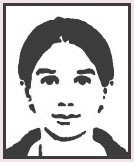
on Natalia Slioussar's webpage
"Binding conditions: How are they derived?"
(St. Petersburg State University, April 24-28, 2007)
"Binding conditions: How are they derived?"
by Eric Reuland (Utrecht institute of Linguistics OTS) et al.
St. Petersburg State University, April 24-28, 2007.
This course is a part of the Utrecht - St. Petersburg collaboration.
Course description:
Considerable effort has been spent over the last decades to describe the nature of binding relations, and to understand the extent of cross-linguistic variation. Binding conditions A and B of the canonical binding theory are surprisingly good approximations, but appear to face many exceptions and irregularities. In a nutshell: they are too good to be false, but too bad to be true. This course focuses on the cross-linguistic perspective and explores how binding conditions reflect the fine structure of the grammar.
Preliminary readings:
Reuland, E. (2003). Anaphoric dependencies: A window into the architecture of the language system. State-of-the-Article. Glot International, 7, 3-25.
AnaphoricDependencies.pdf (227 KB)
Reuland, E. (2005). An overview of binding principles. Ms., Utrecht institute of Linguistics OTS, October 2005.
BindingPrinciples.pdf (222 KB)
Reuland, E. (2004). Basic Issues in the Theory of Syntax: towards a minimalist perspective. Ms., Utrecht institute of Linguistics OTS, October 2004.
BITS.doc (228 KB)
Course materials:
Hand-out 1 (136 KB)
Hand-out 2 (264 KB)
Hand-out 3 (448 KB)
Reuland, E. (in preparation). Anaphora and Language Design. Chapter 1.
Chapter1.doc (200 KB)
Reinhart, T., & Reuland, E. (1993). Reflexivity. Linguistic Inquiry, 24, 657-720.
Reflexivity.doc (372 KB)
by Eric Reuland (Utrecht institute of Linguistics OTS) et al.
St. Petersburg State University, April 24-28, 2007.
This course is a part of the Utrecht - St. Petersburg collaboration.
Course description:
Considerable effort has been spent over the last decades to describe the nature of binding relations, and to understand the extent of cross-linguistic variation. Binding conditions A and B of the canonical binding theory are surprisingly good approximations, but appear to face many exceptions and irregularities. In a nutshell: they are too good to be false, but too bad to be true. This course focuses on the cross-linguistic perspective and explores how binding conditions reflect the fine structure of the grammar.
Preliminary readings:
Reuland, E. (2003). Anaphoric dependencies: A window into the architecture of the language system. State-of-the-Article. Glot International, 7, 3-25.
AnaphoricDependencies.pdf (227 KB)
Reuland, E. (2005). An overview of binding principles. Ms., Utrecht institute of Linguistics OTS, October 2005.
BindingPrinciples.pdf (222 KB)
Reuland, E. (2004). Basic Issues in the Theory of Syntax: towards a minimalist perspective. Ms., Utrecht institute of Linguistics OTS, October 2004.
BITS.doc (228 KB)
Course materials:
Hand-out 1 (136 KB)
Hand-out 2 (264 KB)
Hand-out 3 (448 KB)
Reuland, E. (in preparation). Anaphora and Language Design. Chapter 1.
Chapter1.doc (200 KB)
Reinhart, T., & Reuland, E. (1993). Reflexivity. Linguistic Inquiry, 24, 657-720.
Reflexivity.doc (372 KB)
back to top
back home